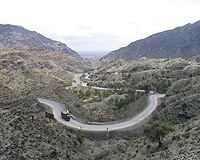| . |  |
. |
Tel Aviv, Israel (SPX) Jul 03, 2009 It's a frequent scene in television crime dramas: Clever police technicians zoom in on a security camera video to read a license plate or capture the face of a hold-up artist. But in real life, enhancing this low-quality video to focus in on important clues hasn't been an easy task. Until now. Prof. Leonid Yaroslavsky of Tel Aviv University and his colleagues have developed a new video "perfection tool" to help investigators enhance raw video images and identify suspects. Commissioned by a defense-related company to improve what the naked eye cannot see, the tool can be used with live video or with recordings, in color or black-and-white. "This enhancement of resolution can be a critical factor in locating terrorists or identifying criminal suspects," says Prof. Yaroslavsky. His team's findings were recently published in Optical Letters and the Journal of Real Time Image Processing.
Seeing using computational imaging "Our video perfection tool works to improve visual quality and achieving a higher resolution of the video image," says Prof. Yaroslavsky. Once a commercial partner is found, the device can be integrated into existing technology within a matter of months, he says.
Digitally calming the "turbulent atmosphere" In the language of optical science, this is known as a "turbulent atmosphere." A critical image of a person or object can become unstable and almost impossible to identify with any amount of accuracy. The TAU team exploited the fact that most parts of a video scene remain still. While there are moving objects such as people, animals or vehicles, a major part of the video ? the background -- does not move at all. Using specially designed algorithms, the team built a software application that lets cameras and video analysis equipment stabilize images, allowing objects that are really moving to be distinguished from chaotic atmospheric changes. The technology will increase the odds of identifying suspects in court, says Prof. Yaroslavsky, but its civilian applications are equally significant. Instead of sending large video files over the Internet, smaller and lower-resolution files could be sent, to be enhanced at their destination points. This could save bandwidth and time. "It's quite a new approach to video perfection," says Prof. Yaroslavsky. "A lot of work has been done in this field, so it's very gratifying to find a new and original application." Share This Article With Planet Earth
Related Links American Friends of Tel Aviv University The Long War - Doctrine and Application
 Commentary: Waiting for al-Qaida's Godot
Commentary: Waiting for al-Qaida's GodotWashington (UPI) Jul 2, 2009 It's no longer a war on transnational terrorism? Before Dr. Emile Coue's method of psychotherapy, self-improvement based on the healing power of optimistic autosuggestion, becomes our national security comfort blanket, it would behoove us all to take a deep breath and snap out of creeping amnesia. By simply changing mental pictures, Coue figured the subconscious also changes -- as ... read more |
|
| The content herein, unless otherwise known to be public domain, are Copyright 1995-2009 - SpaceDaily. AFP and UPI Wire Stories are copyright Agence France-Presse and United Press International. ESA Portal Reports are copyright European Space Agency. All NASA sourced material is public domain. Additional copyrights may apply in whole or part to other bona fide parties. Advertising does not imply endorsement,agreement or approval of any opinions, statements or information provided by SpaceDaily on any Web page published or hosted by SpaceDaily. Privacy Statement |